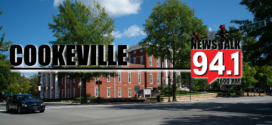An aging population may cause the Federal Reserve to slow interest rate increases over the next several months.
Raymond James Financial Advisor Chris Cravens says more and more Baby Boomers entering retirement will play a role in the Fed’s future decisions.
“At some point there are going to be more people that are retired than there are working,” Cravens says. “As you get older, your consumption goes down and that’s what drives the economy and interest rates. Even if the Fed is making tweaks to interest rates, in the big picture, I would not expect dramatically higher rates anytime soon.”
The Fed announced Thursday short-term interest rates would remain unchanged nearly two months after the most recent increase in September.
Cravens says the reason lies within the economy’s performance.
“They saw that the economy was hitting on all cylinders and they wanted to get ahead of the curve a little bit so that it wouldn’t become inflationary,” Cravens says. “But they’ve had some other numbers come out and showed that the economy was doing well, but it wasn’t that inflationary. So they’ve decided to just leave things where they are at the moment.”
Current federal interest rate remains in the range of two and 2.25 percent. However, Cravens says it’s likely another rate hike is on the horizon.
“They still have the goal of what they call ‘normalizing’ rates back to where they historically have been,” Cravens says. “They kept rates unusually low for quite some time because of the housing bubble that happened back in 2008-2009 when the economy was having some serious troubles to keep us out of recession.”
Cravens says although rates remain unchanged for now, those locally can still see the impact of previous rate hikes through the housing market.
“With people who are borrowing money for homes and whatnot, the mortgage rates have gone up,” Cravens says. “You’re seeing a lot less people refinance their existing mortgages, so the biggest impact that I’ve seen locally is that people can’t borrow their money as cheaply as they could a year ago.”
The Federal Reserve has increased rates three times this year and eight times since 2015.
 News Talk 94.1/AM 1600 Where The Upper Cumberland Talks
News Talk 94.1/AM 1600 Where The Upper Cumberland Talks







